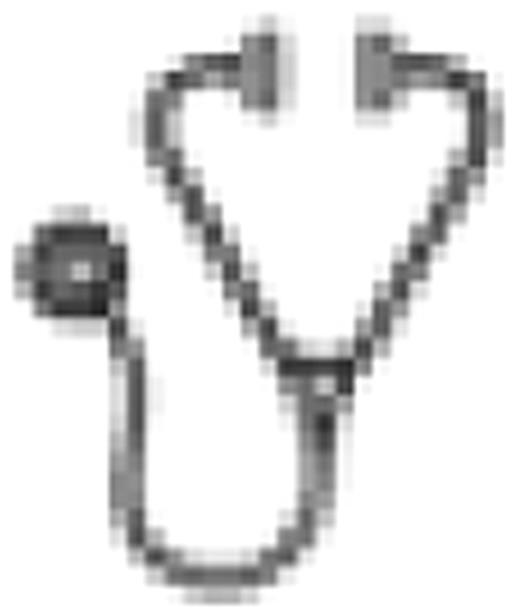Abstract
Nilotinib, an oral tyrosine kinase inhibitor with increased selectivity against Bcr-Abl and approximately 30-fold more potent than imatinib, is effective in CML after imatinib failure. We initiated a phase II study to evaluate the efficacy of nilotinib as 1st line therapy in pts with newly diagnosed CML-CP.
To investigate the efficacy and safety of nilotinib as first-line therapy for pts with CML-CP.
The primary objective was to estimate the proportion of pts attaining major molecular response (MMR) at 12 months (mo). Pts with untreated CML-CP within 6 mo from diagnosis were eligible and received nilotinib 400 mg twice daily. A cohort of patients with previously untreated CML in accelerated phase (AP) was also included.
Sixty-five pts (61 CP, 4 AP) have been treated for a median of 17 mo (range 1 to 43). The median age was 46 years (range 19 to 86). Among 48 pts who were not in CHR at the start, 47 (98%) achieved CHR (one discontinued after 2 weeks without adverse events). Among 51 pts followed for at least 3 mo, 50 (98%) achieved a complete cytogenetic response (CCyR). MMR has been achieved in 32 (63%) pts, including 12 (24%) with a complete molecular response. The rate of CCyR at different time points (intention-to-treat) for pts in CP compares favorably to that observed in historical controls treated with imatinib 400 mg or 800 mg daily:
| Months on therapy . | Percent with CCyR . | ||
|---|---|---|---|
| Nilotinib . | Imatinib 400mg . | Imatinib 800mg . | |
| 3 | 90 | 37 | 63 |
| 6 | 96 | 54 | 85 |
| 12 | 97 | 65 | 89 |
| 18 | 93 | 67 | 89 |
| 24 | 93 | 67 | 88 |
| 30 | 92 | 67 | 89 |
| Months on therapy . | Percent with CCyR . | ||
|---|---|---|---|
| Nilotinib . | Imatinib 400mg . | Imatinib 800mg . | |
| 3 | 90 | 37 | 63 |
| 6 | 96 | 54 | 85 |
| 12 | 97 | 65 | 89 |
| 18 | 93 | 67 | 89 |
| 24 | 93 | 67 | 88 |
| 30 | 92 | 67 | 89 |
MMR was achieved by 55% at 12 mo and 53% at 24 mo (corresponding rates with imatinib 400 mg 34 and 55%, and with imatinib 800 mg 58% and 66%, respectively). Grade 3-4 hematologic toxicity (transient) included thrombocytopenia 11%, neutropenia 12%, and anemia 5%. Grade 3-4 non-hematologic adverse events (regardless of causality) included elevation of bilirubin in 8% and lipase in 6%, and non-neutropenic fever in 6%. 24 (37%) pts had transient treatment interruptions and 11 (17%) had dose reductions. The actual median dose is 800 mg daily. Ten pts have discontinued therapy: 4 pts for toxicity, 2 because of transformation to accelerated or blast phase, and 4 for other reasons. 24 mo EFS (event = loss of CHR, loss of MCyR, AP/BP, death, or off because of toxicity) is 90%. All patients are alive. Among pts in AP, 3 achieved CCyR (all of them sustained); one patient progressed to blast phase and died.
Nilotinib 400 mg twice daily induces a CCyR in nearly all patients as early as 3 mo after the start of therapy and MMR in more than 50% at 12 months with a favorable toxicity profile.
Cortes:BMS: Research Funding; Novartis: Research Funding; Wyeth: Research Funding. Off Label Use: Presentation will include use of nilotinib as initial therapy for CML, and indication for which nilotinib is not approved.. O'Brien:Novartis: Research Funding. Jones:Novartis: Research Funding, Speakers Bureau. Jabbour:Novartis: Speakers Bureau; BMS: Speakers Bureau. Borthakur:Novartis: Speakers Bureau. Kantarjian:Novartis: Research Funding; MGI Pharma (Eisai): Research Funding; Genzyme: Research Funding; BMS: Research Funding.

This icon denotes an abstract that is clinically relevant.
Author notes
Asterisk with author names denotes non-ASH members.

This feature is available to Subscribers Only
Sign In or Create an Account Close Modal